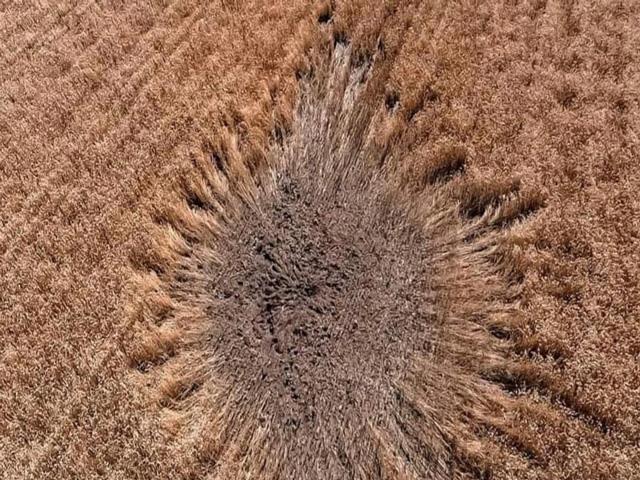Todd's Take
Are Ukrainian Farmers an Endangered Species?
During a week when December corn and November soybean prices have been the victims of more noncommercial selling and a timely forecast for rain in the week ahead, DTN Canadian Grains Analyst Cliff Jamieson shared a webinar link that had been produced by the Agricultural Market Information System (AMIS). The topic was, "What Will Happen to Ukrainian Grains?" (View the entire webinar at http://www.amis-outlook.org/…).
I'll admit up front I was afraid this would be another sterile presentation of analysts, saying things like, "We expect Ukraine to export 9 million metric tons (mmt) of corn in 2022-23," and totally disregard the horrific reality of what life must be like to farm in a war, not knowing if your tractor is about to hit a mine or you are about to take a bullet from some Russian soldier, looking for target practice.
As it turned out, the webinar was well done and I want to share some of the comments from Mykola Gorbachov, the president of the Ukrainian Grain Association, as he described the situation in Ukraine. Gorbachov's 2022-23 export estimates of 10 mmt of corn, 10 mmt of wheat and 2 mmt of barley were close to USDA estimates of 9 mmt, 10 mmt and 1.8 mmt, respectively. It's the conditions surrounding those export estimates that got my attention.
Gorbachov pointed out part of the current difficulties of exporting grain through western neighbors are the restricted capacities encountered crossing borders. Using all the avenues available in western Ukraine, 2.2 mmt of grain were exported in June, far less than the country's export potential of 70 mmt a year before the war. Even worse, Ukrainian farmers, used to paying $35 to $40 per metric ton (mt) to transport grain to Black Sea ports, are now having to pay $160 to $180 per mt to move grain out of the country, making the cost of growing and exporting grains like wheat and barley highly unprofitable.
For that reason, Gorbachov explained he expects planting to be sharply curtailed in 2023. Wheat and barley are likely to be abandoned, he said, with farmers opting instead for the more profitable choices of sunflower seeds and rapeseed. Having lost access to credit and crop protection programs, he expects half of Ukrainian farmers will become bankrupt in the next few months.
P[L1] D[0x0] M[300x250] OOP[F] ADUNIT[] T[]
Approximately 41 minutes into the webinar, I had to hit the pause button and let that string of bombshell statements soak in. In less than five months, one of the most productive farming regions in the world had become a farming and financial nightmare, and an important way of life for many who can't see a future beyond this summer.
If the insanity were to stop tomorrow, there are plenty of sources of international aid that could come to Ukraine's rescue and help restore a future for the hard-working ag sector, but not while Putin's war machine keeps advancing.
Earlier this week, BBC.com reported Russian foreign minister Sergei Lavrov declared Russia's new goal was to push westward and secure the southern areas around Kherson and Zaporizhzhia, using the excuse of needing more territory to stay safe from Western-supplied arms (see https://www.bbc.com/…).
I'm no military expert, but if you focus on Russia's deeds instead of their words, Russia is advancing toward Odesa and appears to be moving toward cutting off Ukraine's access to the Black Sea. Western arms have helped slow Russia's advances, but the situation is getting worse, not better.
Late Thursday and early Friday, rumors were stirring that Ukraine is close to signing an agreement with Russia and Turkey to allow grain shipments out of Ukraine. Gorbachov is in favor of an agreement and said in the webinar he believes it will happen. However, given his knowledge of how problems with lack of grain storage capacity will soon compound if Ukraine's ports aren't allowed to open, it was difficult to tell if he truly believes it will happen or desperately needs it to happen.
I still find it difficult to believe Russia's President Vladimir Putin will allow grain shipments to leave Ukraine without taking advantage of the situation to do something even more horrific. Allowing Ukraine to prosper is not part of his playbook.
If, by some miracle, some way is found to insure and protect ships leaving Ukraine, the benefit of having roughly 20 mmt or 700 million bushels of grain made available to the world will offer some temporary help to countries in need.
The root of the problem has not changed, and Russia's relentless attacks have not stopped. If Gorbachov is close to correct in his assessments, the upcoming hits to Ukrainian grain production may be worse than today's corn and wheat prices reflect. For now, traders are focused on rain in next week's U.S. forecast. In Ukraine, the problems are much bigger.
**
Comments above are for educational purposes only and are not meant as specific trade recommendations. The buying and selling of grain or grain futures or options involve substantial risk and are not suitable for everyone.
Todd Hultman can be found at Todd.Hultman@dtn.com.
Follow him on Twitter @ToddHultman1
(c) Copyright 2022 DTN, LLC. All rights reserved.



